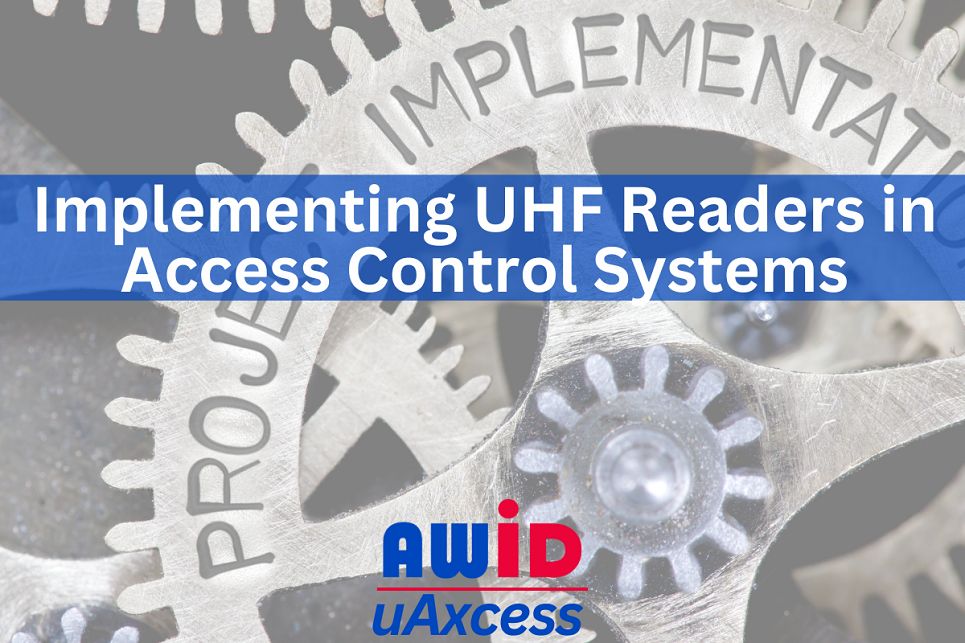Infrastructure Requirements: Evaluate the infrastructure of the facility where the UHF readers will be deployed. Consider factors such as power supply, cabling, and network connectivity. Ensure that the necessary infrastructure is in place to support the installation and operation of UHF readers.
Reader Placement: Determine the optimal locations for installing UHF readers. Analyze traffic flow patterns, entry and exit points, and areas that require restricted access. Place the readers in positions that ensure efficient coverage and minimize blind spots while maintaining a balanced aesthetic.
Environmental Factors: Consider the environmental conditions in which the UHF readers will operate. Factors such as temperature, humidity, and exposure to the elements can impact the performance and durability of the readers. Choose UHF readers that are designed to withstand the specific environmental conditions of the installation site.
Controller Integration: UHF readers often require integration with existing controller infrastructure and access control systems. Ensure compatibility between the UHF readers and the access control software or management platform. Implement proper configurations to enable seamless communication between the readers and the central control system.
Installation and Integration Best Practices
Once the system design is finalized, it's time to move on to the installation and integration phase. Following best practices during installation is crucial to ensure that the UHF readers function as intended and seamlessly integrate with the access control system:
Reader Mounting: Install UHF readers at the designated locations, considering the reader's read range and the desired coverage area. Mount the readers securely using appropriate hardware to prevent tampering or unauthorized removal.
Antenna Positioning: Proper positioning of the reader's antennas is essential for optimizing read range and signal strength. Adjust the antenna orientation and angle to ensure that the signal covers the intended access points without unnecessary interference.
Calibration and Testing: After installation, calibrate and test each UHF reader to ensure accurate read performance. Test the readers with different types of UHF credentials at various distances to verify consistent and reliable authentication.
Integration Testing: Integrate the UHF readers with the access control software or management platform. Test the communication between the readers and the central system to verify data exchange, access permission enforcement, and event logging.
Training and Support for End Users
Providing comprehensive training and ongoing support to end users is essential for the successful utilization of UHF readers in access control systems:
User Training: Offer training sessions to educate end users, administrators, and security personnel on how to use the UHF readers effectively. Cover topics such as presenting credentials, understanding access control rules, and troubleshooting common issues.
User Manuals and Guides: Provide user manuals and guides that explain the functionalities of the UHF readers, credential usage, and basic troubleshooting steps. Clear and concise documentation helps users navigate the system with confidence.
Technical Support: Establish a dedicated technical support channel for end users to seek assistance in case of technical challenges or questions. Ensure that your support team is well-versed in UHF technology and can provide timely resolutions.
Ongoing Training: As updates, enhancements, or new features are introduced, offer refresher training sessions to keep end users informed about the latest capabilities of the UHF readers and the access control system.
Addressing Common Challenges and Troubleshooting Tips
During the operation of UHF readers in access control systems, challenges may arise that require swift resolution. Here are common challenges and troubleshooting tips to consider:
Read Range Issues: If UHF readers experience inconsistent read range, check for potential interference sources such as metal objects or electronic devices. Adjust the antenna positioning and check that reader is receiving adequate power.
False Readings: False readings can occur due to signal reflections or interference. Consider adjusting the reader's sensitivity settings or using shielding to minimize false readings caused by nearby reflective surfaces.
Credential Compatibility: If certain credentials are not being recognized by the UHF readers, ensure that the credentials are UHF-enabled and compatible with the readers' frequency range. Verify that the credentials are properly enrolled in the system.
Conclusion:
The successful implementation of UHF readers into access control systems requires careful planning, diligent installation practices, comprehensive training, and efficient troubleshooting strategies. By considering infrastructure requirements, reader placement, environmental factors, and network integration during the system design phase, security dealers can lay the foundation for a robust and reliable access control solution. Following best practices for installation and integration ensures that UHF readers perform optimally and seamlessly integrate with the existing access control infrastructure. Providing thorough training and ongoing support to end users empowers them to make the most of UHF readers, while addressing common challenges and employing troubleshooting techniques ensures the smooth operation of the access control system. By mastering these implementation processes, security dealers can offer comprehensive, efficient, and effective access control solutions that leverage the capabilities of UHF readers.
Installation Guides
You can download all AWID’s uAxcess UHF reader installation guidelines here. To learn more about UHF Access Control, visit www.AWID.com


